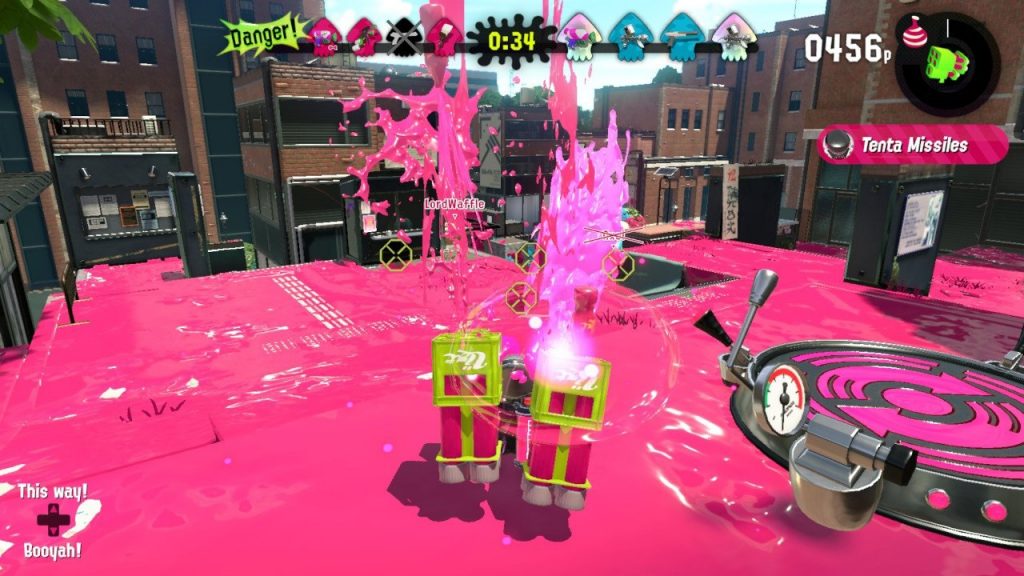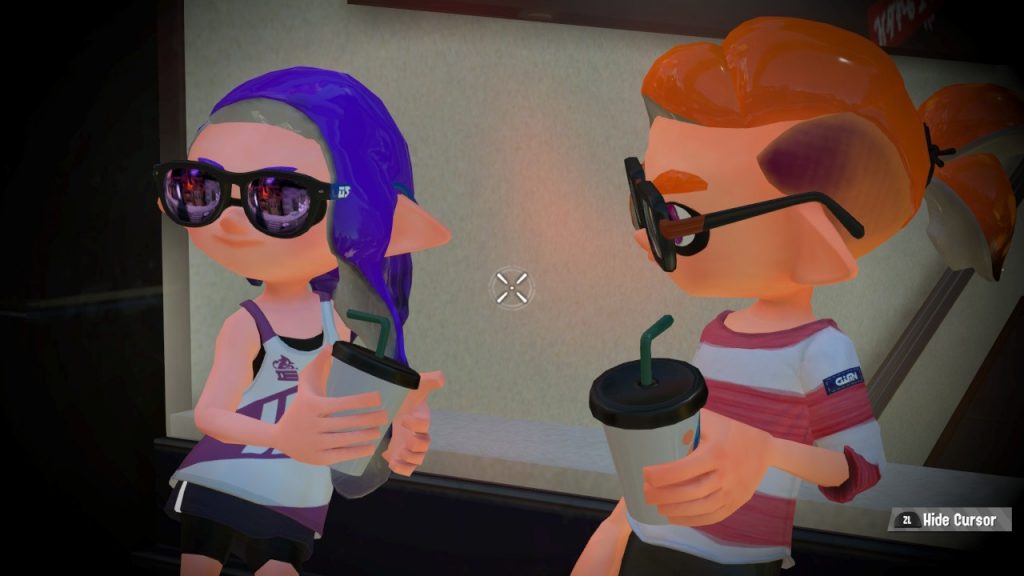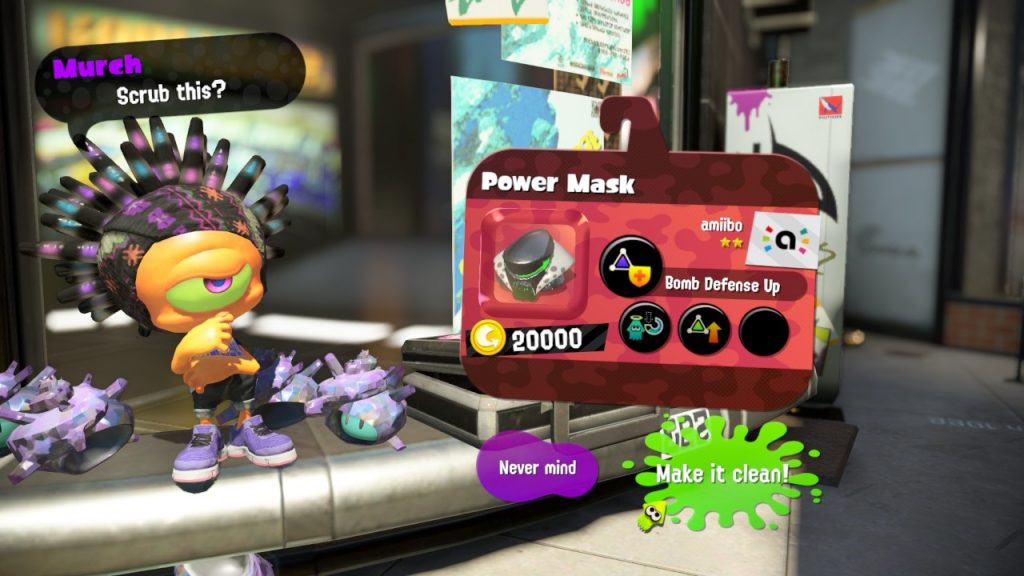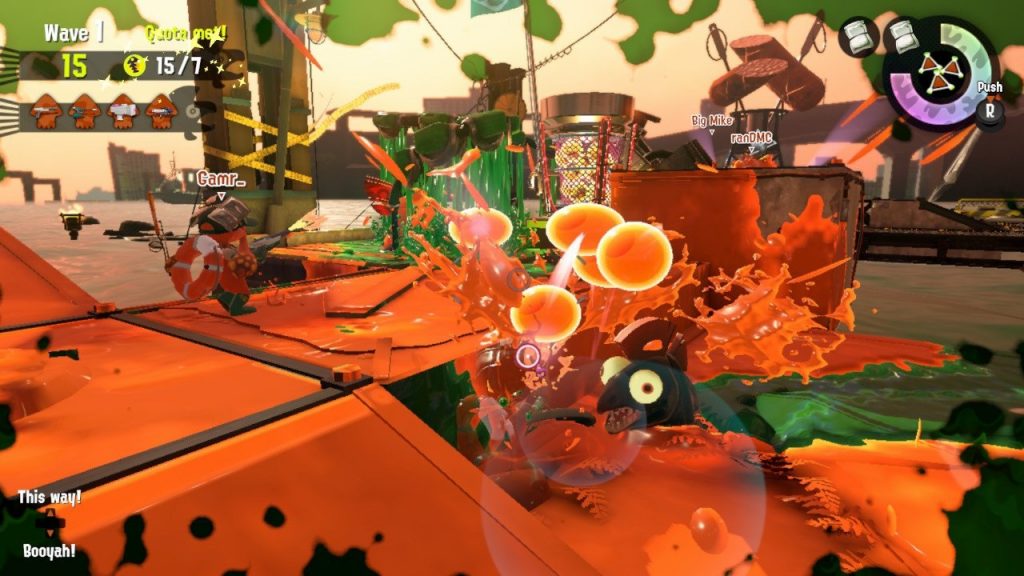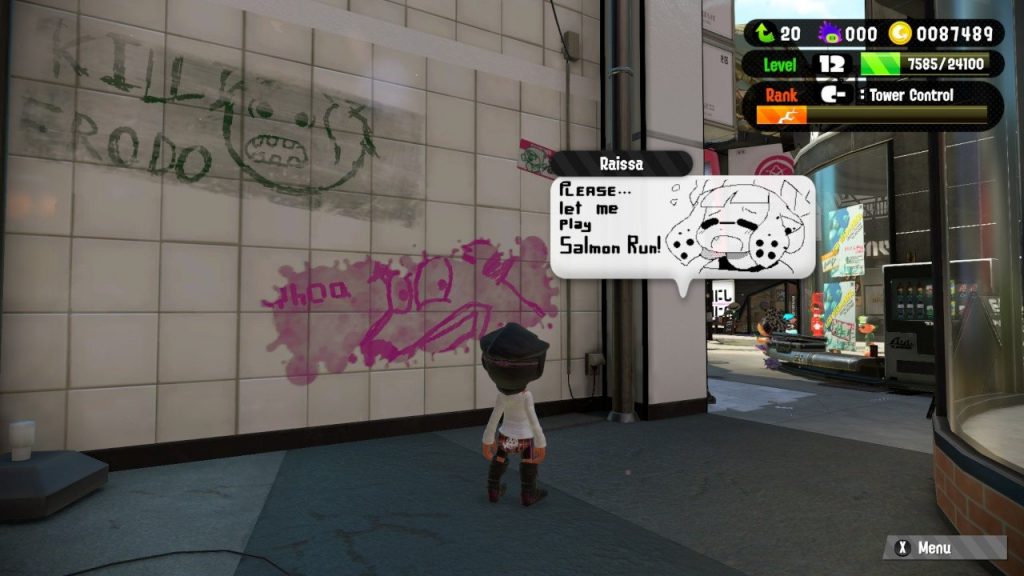
After my hands-on at E3 and experience with the first Splatfest demo, I was a little concerned about Splatoon 2. I loved Splatoon 1, but something about the E3 Salmon Run fell flat, and after having experienced the full version of Splat 1, I thought that the demo of Splat 2 without customization felt too shallow.
So I was provided a review copy of the game prior to launch, and something still didn’t feel right. While it was good to get in time with the single player mode and prepare me for launch, I figured out what was missing: the real Splatoon community. It’s what gives Splatoon more of an MMO-y feel than most of Nintendo’s other titles.
What is Splatoon?
If you missed our coverage of the original, know that Splatoon is basically a third-person, objective-based shooter for people who are bad at shooters. As much as I’ve come to appreciate Overwatch, Splatoon instantly advertises its strong and unique twists to the genre. Instead of bullets, you shoot ink. This makes the game not just kid friendly but innovative in ways that make bad players feel good.
See, ink isn’t just bullets. It’s a run (de)buff, ammo cache, and ground-based HoT/DoT. If you’re dying, swim in friendly ink. If you need to catch up to catch up to someone, cut him off with your ink. Every shot you miss, be it on the wall or the floor, provides myriad advantages to your team. In fact, I’d argue one of most people’s biggest issues with playing this game is not spreading ink. People with great aim aren’t bad at all, but I’ve seen them and their teams fall apart to mediocre shots (like yours truly) just because they didn’t have a nice inky escape root.
Ink lets you climb walls and even stealth by submerging yourself in it. It can reveal where sniper shots are coming from or where the enemy team is on the map. It communicates basic gameplay features casual gamers miss in many shooters in a fun, bright, and obvious manner.
To add to that, the game has a lot of style, and not just pop culture references and in-game music that’s hard to ignore; its players customize themselves with gear that’s largely based on real-world clothing. While there are robot outfits and samurai armor, most of your gear is leather jackets, rain boots, hipster glasses, and other things you might actually wear in real life. Splatoon 2 has added gear “scrubbing,” a way to delete random bonuses you acquire on your armor and store up the pieces to add to other armor. Abilities have been rebalanced and the game’s mobile app further mix things up, ensuring that even without actual transmog, you can find gear you like and make it useful for combat, if not optimal.
What makes Splatoon 2 MMO-y?
There are a lot of lobby shooters these days, so it may be odd that I’m talking about a game with no text-based chat client and an incredibly odd, restrictive, mobile-app-dependent voice chat. Truth be told, I’ve recommend that people with friends simply use their favorite voice chat instead of what Nintendo’s providing. Even worse, Nintendo’s killed off its Miiverse social media site on the Switch, which connects with 3DS and Wii U consoles to allow something like tweets and private messages.
What it does right, though, is create a graphical lobby out of slightly modified Tweets. Players can hand-write a message or draw something. When you play against other people, you’ll fill that person’s lobby and carry the message with you, with said message possibly being seen in other players’ towns and battlegrounds as background graffiti. It’s a good use of asynchronous communication that helps make the game world appear to belong to the community. It’s one of the things that I really noticed was lacking during the press testing period, as Nintendo’s connection to Twitter instead of its own Miiverse prevented any images from the game to be shared with the outside world until 24 hours before the game’s launch.
Further more, the last of the of the in-game community events actually affected the sequel’s story. It’s nothing particularly deep, but for those of us who participated in it, it’s a bit sad knowing we were somewhat responsible for the fate of a character we still liked. I worry Splatoon 2 has already set us up, as the story behind the game’s new mode makes it sound like we’re doing something we shouldn’t. Time will tell on that though.
Basic controls are now wholly accessible without motion control, but I still feel that, as a PC gamer, the motion control set to full sensitivity is the closest I can get to feeling like I’m using a mouse with a console game controller (that’s a good thing). It’s not perfect, but it works a lot better than ARMS‘ motion controls. It’s actually one of the points that drew me to the original game and helped me get back into the shooter genre.
Any game can have gear, but Splatoon 2’s randomly generated gear has abilities (from lowering ammo usage to stealth and real-time dodge additions) that unlock as you battle. It’s brought out my inner treasure hunter in ways single-player games rarely trigger. The difference is, rather than camping a spawn or raiding weekly for a certain drop, I can buy the drop from the in-game or mobile app store or order an item that’s similar to something people in my lobby are wearing.
The random abilities on gear will change except for the main slot abilitty and style. Again, this is a system that’s very much promoting transmog-as-battlegear, so while you may not want that leather jacket because you don’t care about powering up bombs, you can keep searching the in-game store and your lobby’s denizens to see if someone has one with an ability you want.
While the PvP matches – ranging from painting the most terrain to “payload” type deliveries – are nothing new to the series, the new Salmon Run PvE mode feels a bit like running dungeons to prepare for PvP, something we don’t normally see in MMOs. That is, modern MMOs tend to separate PvP and PvE armor with a few exceptions. When the two overlap, there’s often a PvE item that completely wrecks the PvP scene.
From PvP to PvE and back again
Splatoon 1 is essentially a PvP game. Most of it revolves around painting more territory than your opponent rather than killing each other, but obviously it’s easier to paint if the other side’s dead. It’s an elegant mechanic that’s fun and easy to understand. Both games also have a single-player game that is mostly separated from the lobby game (no shared levels or gear), but Splatoon 2 has added Salmon Run, a horde-mode type PvE where you harvest salmon roe and golden eggs for a famous kind of bear sculpture by killing “trash mobs” and bosses, the latter of which can stack in chaotic ways, like one tossing bombs from the sky, another zapping lasers across the map, and another from below in the ink you stand in.
However, Salmon Run is gear-agnostic. You are given rental weapons and can’t use your usual gear. There is a pool of weapons and specials the game picks for each online event, which opens at odd, 12-hour intervals, like 5am to 5pm on a Monday. At the start of each round, you’ll be assigned a different, random weapon from the set of four. The level difficulty seems to be based on your rank, but is actually mostly random, ranging from a walk in the park to that scene in Starship Troopers (NSFW). Fog, night, level flooding, and other environmental hazards come into play randomly. It’s mostly skill-based, so understanding the basics of all the game’s weapons really helps you shine, which in turn prepares you for PvP mode.
During a Salmon Run, you must collect a set number of golden eggs during each of three rounds. Unlike the regular painting battle modes, not only are you fighting NPCs, you’re able to rez allies by painting them in their downed state – a life preserver. While I played this mode at E3, it was without context, probably because it was the local multiplayer version of the game and not the online one. It turns out that online players are working for promotions (which you can win or lose based on performance) that help you climb your way towards bonuses (which you can’t lose). Bonuses provide you with cash and ability chunks used in PvP. PvE requires you to have no gear, but it helps you get cash, consumables to increase stats/bonuses, and “enchantments” for PvP. You can’t gain levels, but these are all nice rewards that, beyond the consumables, can be earned in PvP mode,
While I hate losing levels, the system seems rather fair at this point. I’ve failed several missions when I admittedly jumped too deep into enemies or we all crowded around an objective and got splatted, failing the mission. One time, we ran into a secret boss (secret because the tutorial has you battle every other one before letting you play online with others) and wiped almost immediately, but I had an idea why we’d failed and I wasn’t very mad. That being said, it’s frustrating, since I can’t play with friends because outranking them means I may earn nothing, and the game’s preset communications are lacking, to say the least (no “Where are you?” to remind other players to communicate their positions, which is luckily one of the preset phrases).
What Salmon Run creates is a good practice mode for learning all the weapons in a fun, frantic way that also provides rewards to help players gear up for fighting against human opponents. This is key in the PvP modes because maps and objectives (in ranked play) rotate. For example, long-ranged “charger” guns work best in big levels, while close-range rollers can work better in more enclosed maps. However, rollers are better for painting and don’t feel as useful when you’re paying the payload mode. Being flexible with your weapon selections is just as important as it was in Splatoon 1, especially since Nintendo still hasn’t given players the option to change loadouts or even cancel out of the game while queued for a match.
Final shots
Splatoon 2 sadly doesn’t fix any of the major problems of Splatoon 1. The new gear scrubbing and ability chunk features, when combined with the mobile app, takes out a lot of RNG and adds in more customization, not just with abilities but with appearance. Since the clothes are mostly fun, it makes this a shooter that can really appeal to socializers in ways Call of Duty never will.
While the lack of a decent communication system – voice or text – felt forgivable in the first game, Splatoon 1‘s gameplay really helped teach players how to properly play the ink game without chat, so it worked — in other words, when we were all new and learning together, no communication beyond preset phrases was OK. But here it might be nice if Nintendo at least allowed for customizable preset phrases in addition to a more modern voice chat option. The ability to change loadouts or cancel your queue is still sorely needed. I miss my second screen for checking the game’s map mid-battle, but the new one is serviceable.
I’m disappointed in how the original game’s specials have been scrapped and replaced with more specialized abilities that do nearly the same thing with less “oomph,” but they’re still fun. Especially with the new Salmon Run, Splatoon 2 feels like it has unique gameplay that’s worth checking out, in addition to its graphical, Twitter-like lobby filled with community art and comments. It’s a great way to introduce someone to shooters and online gaming. Let’s just hope that Splatoon 3 goes farther in the MMO direction so we can directly interact with each other, maybe even build cities together before covering them in ink.

